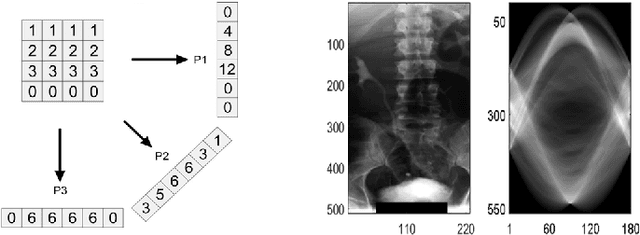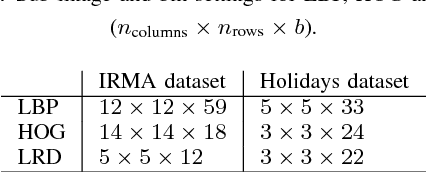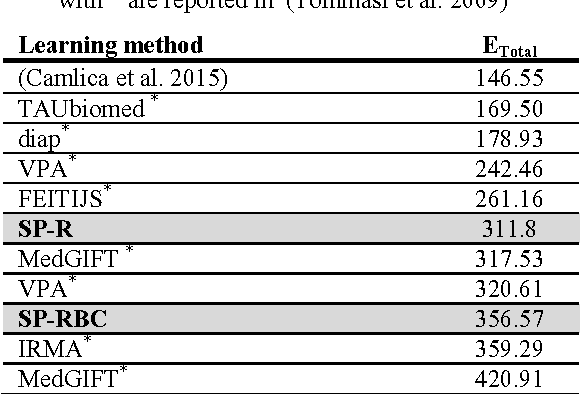M. E. Shiri
Local Radon Descriptors for Image Search
Oct 11, 2017



Abstract:Radon transform and its inverse operation are important techniques in medical imaging tasks. Recently, there has been renewed interest in Radon transform for applications such as content-based medical image retrieval. However, all studies so far have used Radon transform as a global or quasi-global image descriptor by extracting projections of the whole image or large sub-images. This paper attempts to show that the dense sampling to generate the histogram of local Radon projections has a much higher discrimination capability than the global one. In this paper, we introduce Local Radon Descriptor (LRD) and apply it to the IRMA dataset, which contains 14,410 x-ray images as well as to the INRIA Holidays dataset with 1,990 images. Our results show significant improvement in retrieval performance by using LRD versus its global version. We also demonstrate that LRD can deliver results comparable to well-established descriptors like LBP and HOG.
Retrieving Similar X-Ray Images from Big Image Data Using Radon Barcodes with Single Projections
Jan 02, 2017



Abstract:The idea of Radon barcodes (RBC) has been introduced recently. In this paper, we propose a content-based image retrieval approach for big datasets based on Radon barcodes. Our method (Single Projection Radon Barcode, or SP-RBC) uses only a few Radon single projections for each image as global features that can serve as a basis for weak learners. This is our most important contribution in this work, which improves the results of the RBC considerably. As a matter of fact, only one projection of an image, as short as a single SURF feature vector, can already achieve acceptable results. Nevertheless, using multiple projections in a long vector will not deliver anticipated improvements. To exploit the information inherent in each projection, our method uses the outcome of each projection separately and then applies more precise local search on the small subset of retrieved images. We have tested our method using IRMA 2009 dataset a with 14,400 x-ray images as part of imageCLEF initiative. Our approach leads to a substantial decrease in the error rate in comparison with other non-learning methods.
 Add to Chrome
Add to Chrome Add to Firefox
Add to Firefox Add to Edge
Add to Edge